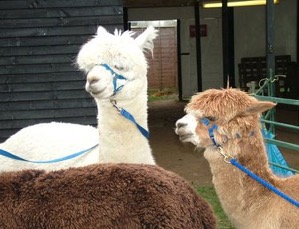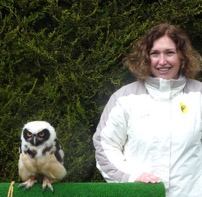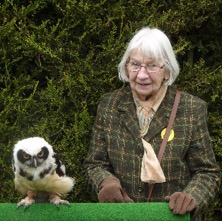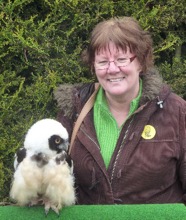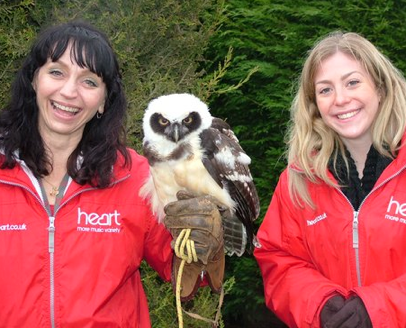Last weekend, a couple of our falconers took some birds to the East Anglian Game & Country Fair, which is a fair old drive to Norwich from Stonham Aspal, taking just under an hour and generally speaking is about as far as we like to transport our birds of prey.
You’d think it might be easy just to put a raptor in a box and away you go, but actually there are lots of factors that need to be taken into consideration. As with all animals in cars, one very important aspect is how hot the weather is when you’re driving and it’s very important to ensure that birds don’t overheat whilst in transit. Raptors generally don’t drink very much, instead deriving the moisture they need from their food, so it’s less easy to offer them a drink than you might, for example, with a dog. Proper travelling boxes, purposely designed for birds of prey, are equipped with ventilation holes that allow plenty of air flow at all times.
Pungu, our Bateleur Eagle, visited the East Anglian Game & Country Fair last weekend
The size of travelling box is also extremely important: depending on the size of the bird, it’s vital that a travelling box offers enough room so that the bird isn’t bashed against the sides, but is not so big that it can jump around too much and damage itself. Suitable perches are also a requirement, allowing birds to perch in a natural position with clear headroom and without allowing their tail feathers to touch the floor of the container.
Our birds are transported in specially-designed boxes to allow plenty of ventilation and accommodate varying tail lengths and wingspans
For example, one of the birds to make the journey last weekend was Pungu, the Sanctuary’s Bateleur Eagle. Pungu is a big bird, being approximately 24 inches long, with a wingspan of 5'6" - 6 ft. She is what’s commonly known as a ‘Serpent Eagle’, due to her natural preference for eating snakes. Because of this she has, for a bird of prey, a very short tail, allowing her to jump backwards away from a striking snake. For Pungu then, keeping her tail feathers intact isn’t a problem. However, she has extremely long primary feathers (those at the tips of her wings) and they must be kept clearly off the ground when she’s in her travelling box, to prevent them being broken.
This picture of Pungu basking in the sun illustrates her impressive wingspan, the primary feathers of which must be carefully protected during transit
Some eagles are too big to even sit on a perch whilst travelling and are safest sitting on the ground. Red Kites on the other hand have extremely long tails and need especially high perches to keep their tail feathers intact.
Even the way a bird box is positioned in a vehicle can give a raptor a more comfortable journey. Planning the route beforehand really helps. If you know you’re travelling on lots of straight roads, it’s best to have a bird box facing either directly forwards or directly backwards. If the journey is likely to be fairly wiggly, then the birds can follow the movement more comfortably if their box is placed sideways to the wheels of the vehicle.
As with all animals, different birds react differently to travel; some get travel sick and others can get quite distressed, so it’s wise to try a short journey first. As always, the needs of our birds come first here at the Sanctuary, so the falconers only travel with the birds they know are happy to take it all in their stride!














